Today’s Wordless Wednesday photos, taken in a laundromat, require some explanation. Take a look and see what you notice:
It looks like the original hardware for each door was a double-cylinder deadbolt. Although a key-operated lock would be allowed by the model codes on a door serving a laundromat, there are a few problems:
- The lock is supposed to be readily distinguishable as locked – most (but not all) AHJs interpret this as a deadbolt with an indicator.
- The key-operated lock is allowed on the main door or doors, which would likely be the pair of doors and not the single door. Depending on the layout, both doors might be considered main doors.
- The opening must have signage stating “This door to remain unlocked when this space is occupied.” (or “when the building is occupied”)
At some point, the electromagnetic locks were added, and they appear to be on a timer in order to lock the doors automatically at 9 p.m. For anyone who is still in the laundromat when the doors lock, the push button next to the door is intended to allow them to exit. The problems with this are:
- The button beside the door can not be the primary means of releasing the doors – a sensor is required which detects an occupant approaching the door and unlocks the mag-lock. This is the main issue that can be confirmed from the photos – the missing sensor.
- The other requirements that would apply to these openings:
- The auxiliary push button must result in direct interruption of power to the mag-lock – independent of the other electronics – the lock must remain unlocked for at least 30 seconds. The button does say “Push to Exit” as required by code, but it looks to me like it’s installed above the allowable range of 40-48 inches AFF.
- The lock must unlock upon activation of the fire alarm or sprinkler system, if provided, and upon loss of power. If the mag-locks have replaced the double-cylinder deadbolts as the means of locking the doors, the building will not be secure if there is a loss of power or fire alarm/sprinkler activation.
- The 2021 IBC would require emergency lighting on the egress side of the door, but it’s unlikely that this code has been adopted in the building’s jurisdiction yet. Current codes would also require the mag-locks to be listed to UL 294.
Thank you to Joe Cross of Allegion for sending the photos!
You need to login or register to bookmark/favorite this content.

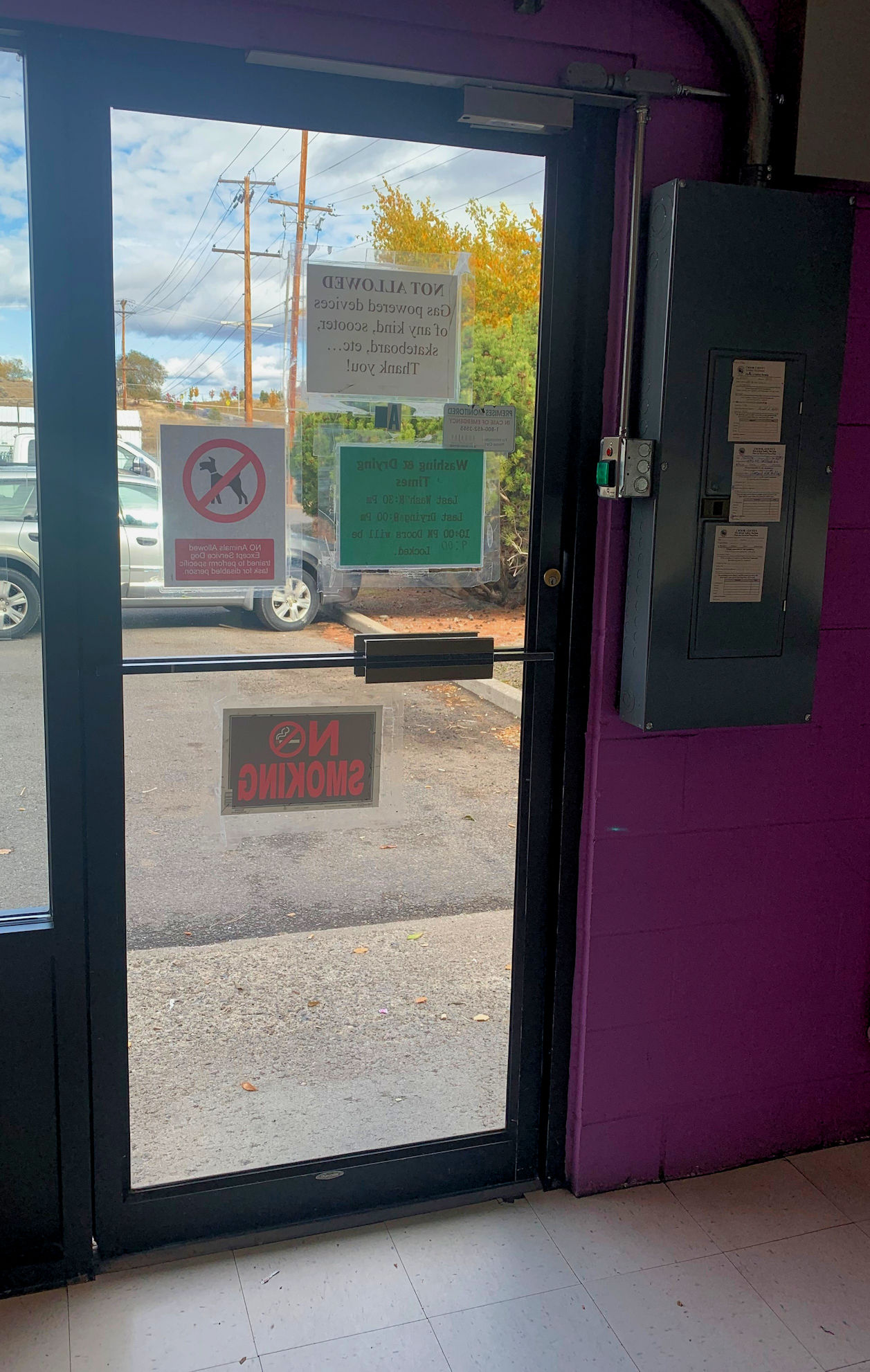
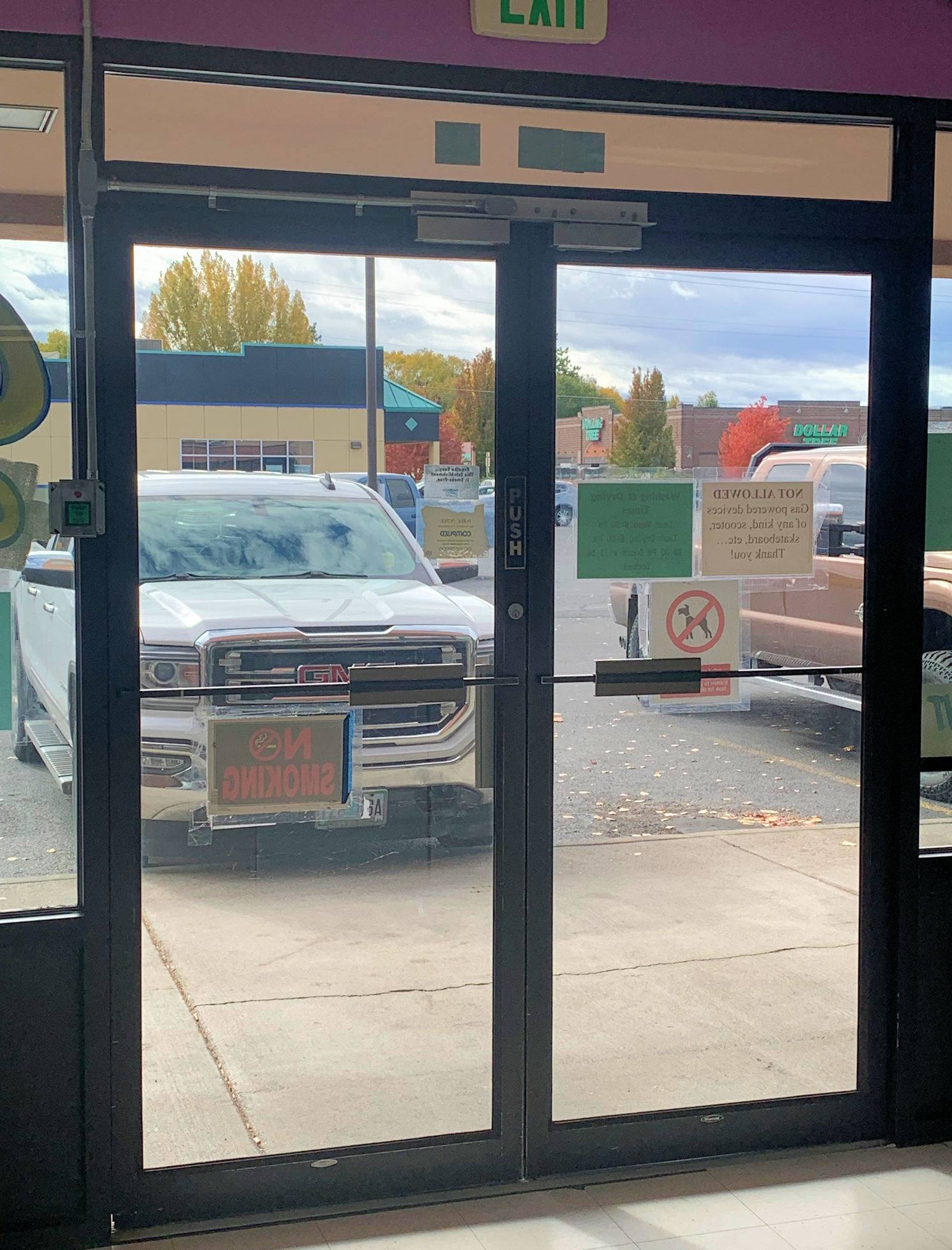
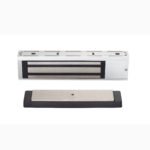

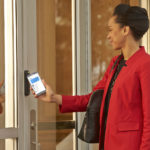
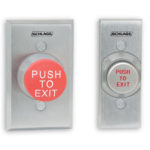




We must also ignore the electrical code violations on the single door. The clearances around that electrical panel have been ignored on at least 2 sides.
The required working clearance (NEC 110.26(A)) extends from the face of the panel, so that’s not an issue, and I don’t think the electrified access control stuff qualifies as “foreign to the electrical installation” for NEC 110.26(E)(1) purposes, either…are you saying that low-voltage systems, electrically powered control systems, and so on are “foreign to the electrical installation” because they aren’t in the business of distributing service-supplied power to end-users?
Sad that someone posing as a professional is allowed to continue doing this kind of non-code compliant installation. One good inspection by the local fire marshal could solve much of this. Hopefully someone will call the local fire dept and suggest an inspection as these doors are a death trap. Don’t wait till it’s too late.
In Alberta, the Push to Exit Buttons and the REX Sensor are no Longer Legal to Use, the Mag-Lock Release device must be Mounted on the Door to allow Free egress in One Motion Going Out, the Release Device cannot be mounted more than 48″ above the Finished floor, this makes all other devices mute. As for Power to the Mag-Lock, it must be controlled by the Buildings Fire Alarm System, it cannot have a Battery backup, can be powered by the buildings Generator system, the Maglock Power Cannot self reset. It must be controlled by a manual reset switch, that cannot be done until after the Fire Department resets the Fire Alarm Panel. We have the most stringent codes for MAglocks in Canada. I still see installations done after the codes changed in 2019, that are not up to code and the building owners are now going back and forcing the installing companies to bring the doors up to code. There is No Grandfathering for existing buildings either. All Systems installed before the code change must be brought up to code. This has been the biggest issue, many customers and installers don’t believe they need to do this, and we refuse to repair their doors until they are up to code.
Interesting Jim! Thanks for letting me know.
– Lori